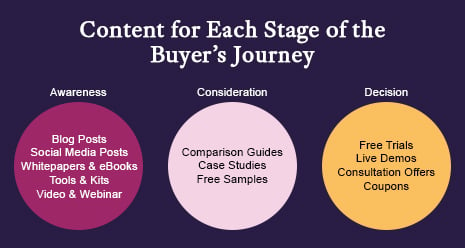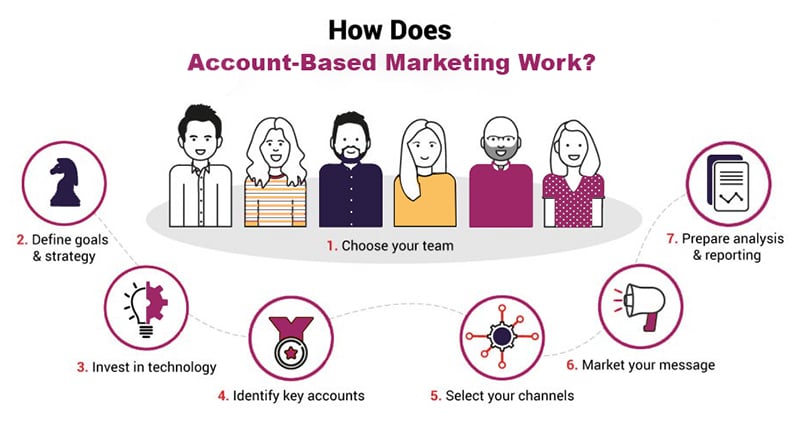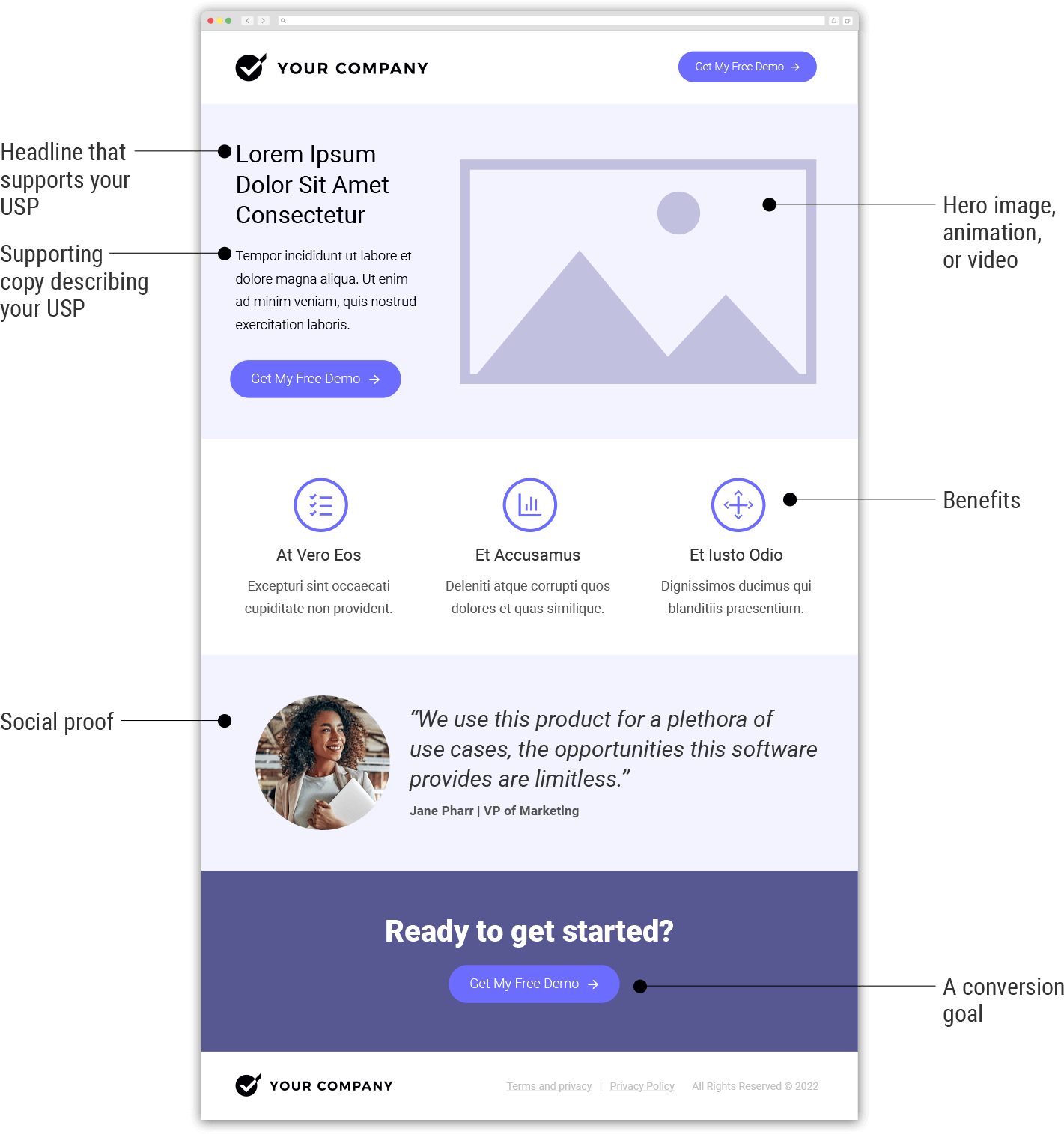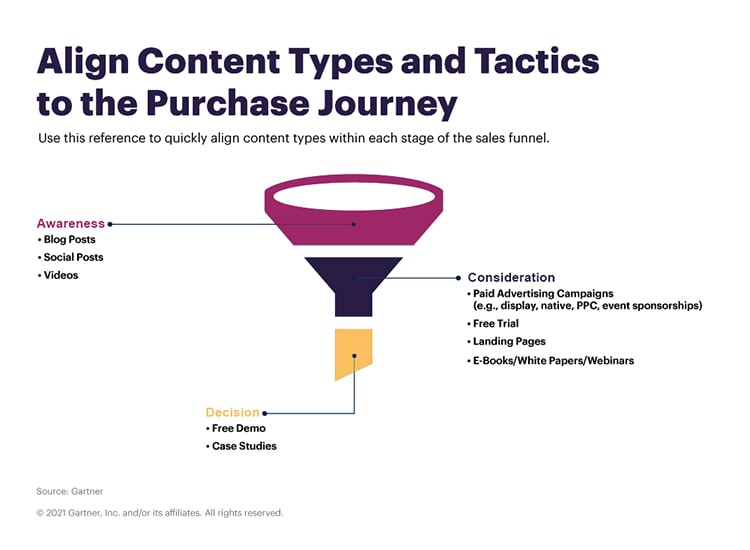
B2B Demand Generation Strategy Guide: Creating a Winning Marketing Plan
It is easy to get overwhelmed when you ask yourself the question, "What kind of B2B demand generation strategy should I have?" The sheer volume of information online, much of it contradictory or thinly supported, makes it harder.
Common sense wisdom will tell you to tailor your strategy to your target buyers. But who exactly is your target buyer? And why is your product the best fit for them? In today's highly competitive market, a lack of clarity on these points results in costly missed opportunities.
That is why we have put together this guide to the powerful early-stage marketing strategy that is B2B demand generation and how to make it work for your company:
What is B2B demand generation?
B2B demand generation refers to building awareness about a business and a desire for what it offers. It is an organized process that systematically reaches out to the target audience through designated channels and wins them over with compelling stories.
-1.png?width=372&height=135&name=unnamed%20(4)-1.png)
Demand generation involves knowing your target audience and placing your brand before them as the go-to solution to their needs. Over time, it can position you as the market leader in your industry and attract loyal customers and a steady stream of qualified leads.
What are the challenges with your demand generation?
Demand generation is a multi-faceted strategy that involves multiple channels, touchpoints, and customer segments. However, there are several common challenges that you may face when implementing a demand generation strategy.
One challenge is not adequately engaging with customers to understand their needs and preferences. This can be addressed by involving multiple departments in customer profiling and journey mapping, and using intent data to identify the behaviors and needs of target buyers.
Another challenge within the B2B demand generation framework is failing to generate desired results from content, which may be due to a misalignment with specific personas or touchpoints. To overcome this, it is important to carefully define target personas and create relevant, informative content that addresses their specific needs and preferences.
Another issue that may arise is a lack of conversion of leads into customers, which could be due to improper segmentation of lists, aggressive CTAs, a lack of follow-up, or a mismatch between search queries and content.
To address this, it is important to carefully segment lists, nurture leads through email campaigns and remarketing, and ensure that content is relevant to search queries.
Another common challenge in demand generation is finding the time and resources to build and test landing pages, which can significantly improve conversion rates. To be successful in demand generation, it is important to be findable when potential customers are searching, and this requires a focus on search engine marketing and a consistent presence across multiple channels and time periods.
Finally, a lack of the right data to make informed decisions can also be a challenge. To overcome this, it is important to define key metrics and track them using analytics tools, marketing automation software, and a CRM, as well as using the appropriate attribution models to track the effectiveness of marketing efforts.
Why a strong B2B demand generation strategy is vital
Today, 61% of buyers are more hesitant to purchase new products or avail new services than ever before. A surfeit of choices, lack of clarity about their own needs, and hesitation over price all lead to decision fatigue.
Added to this is that much B2B sales content is focused on driving final conversions rather than drawing in new leads. A solid B2B demand generation strategy puts back the power in the B2B demand generation funnel, i.e., 'creating demand, capturing it, and then managing it.'
It targets the buyers right from the critical early stages, emphasizing the importance of demand generation best practices. The goal is to spread awareness about your business and to position it as a leading authority in the industry while convincing customers of the superiority of your product or service n in question.
Combining this conviction and trust in your business will create a pipeline of buyers who are much more ready to convert, even when they are near the top of the funnel.
In other words, you are able to attract a set of higher-quality leads from the get-go, which means the sales team can focus its efforts on leads who are actually worth it. And eventually, this translates into higher revenue and a list of repeat customers for you.
How to optimize your B2B demand generation strategy
In today's fast-paced business landscape, there is a great need to implement B2B demand generation strategies that enable customer acquisition- fast and for the long haul - with well-positioned content, brand messaging, and tools. Partnering with a B2B demand generation agency can be instrumental in achieving these objectives. A specialized B2B demand generation provider can help your company avoid a sales plateau and drive higher conversions through targeted marketing and lead generation efforts. Here is how you can optimize your B2B demand generation strategy:
1. Set your goals and objectives
What exactly do you want your B2B demand generation strategy to achieve? Do you want to capture a new target market? Do you want to move your focus to selling a specific product? Do you want to activate a dormant customer group?
Whatever it is - brainstorm with your team and reach an agreement about your revenue goals, the kind of sales pipeline you need to achieve those goals, the percentage of opportunities that will turn into conversions, and the ratio of marketing-qualified leads to sales-qualified leads.
2. Identify your target customers
Defining your target audience is a prerequisite for selling to them - unless you know who your buyers are to understand what they need and how you can fulfill those needs. So invest in thoroughly researching who your ideal buyers are and why they make purchases when they do.
This is known as intent data, and 49% of B2B marketers who do not leverage this find it harder to comprehend who their target audience is. Do the research upfront, and then define a buyer journey, content variants, and appropriate marketing channels for each of them.

3. Decided on a type of demand generation strategy
Once you have streamlined the content about your product or service for your intended audience, identify how you will approach them, addressing each customer journey touchpoint. There are two ways to go about it:
a. Broad-reach marketing
This strategy suggests pushing out a single message to a larger target audience (based on demographics, firmographics, user behavior, and so on) to sell more products or services and achieve a higher return compared to a more targeted approach.
Broad-reach marketing is done with the notion of targeting the right people with the right messaging at the right time and in the right place. However, it may sound beneficial, but a broader message appealing to multiple buyer segments will be less likely to resonate with people who could be considered further down the funnel.
b. Account-Based Marketing (ABM)
This is a B2B demand generation strategy where you consider and communicate with individual prospects or smaller customer accounts as markets of one - rather than casting a vast and impersonal net to capture as many customers as possible.

ABM allows you to personalize your marketing efforts to specific buyer accounts and tailor the content to alleviate those accounts' pain points or needs. Some common ABM content examples include webinars, custom email drip campaigns, and landing pages.
4. Have a clear value proposition
This encapsulates why your buyers should choose you - what distinguishes your brand from your competitors' brands. When defining this, consider the core benefits you provide to your customers. Are you aiming to minimize the time taken to complete a process?
Are you trying to help a specific demographic with previously underserved needs? Are you bringing more transparency and data-driven insights to a business process? The answer to this will set the foundation for all your content and outreach efforts.
5. Implement a multi-channel marketing approach
Your best chance of building a broad audience is by connecting with them through multiple channels, such as email, LinkedIn, or other social channels and chat messages.
According to Hubspot, the three top channels for finding and connecting with leads are SEO, email, and social media. Build a mix based on your industry's needs.
Grammarly, the cloud-based typing assistant, has put significant resources into YouTube video ads, emails, and display advertisements while ensuring the brand messaging and aesthetics are on-point. The video ad showcases how Grammarly works, and the other marketing content supports the same message.
6. Create strong landing pages
Lead capture is a vital part of B2B demand generation, which means you need to offer your customer something solid enough - a lead magnet - that they will be willing to share their personal information.
It could be a research report on an urgent problem they are facing, an eBook where you share industry secrets, or an invitation to a webinar with a subject matter expert. Get quick B2B demand generation wins on the page by following these steps:
- Write a strong headline for the page and supplement it with an equally strong subheading that talks about your lead magnet's USP.
- Back up your content with social proof and testimonials.
- Make your Calls To Action (CTAs) more relevant and place them strategically on the page.
- Deploy a chatbot or live chat functionality to overcome your visitors' objections.

Once the leads start coming in, have scoring criteria to qualify them. This will help you know which kinds of content each type of lead will respond to - which brings us to the next part.
7. Invest in customer-focused content
Content for B2B demand generation should focus on addressing pain points and convincing customers that your brand is the solution to them all.
While many B2B brands invest in gated content for lead generation, it is equally essential to have ungated content for those in the top, middle, and bottom of the funnel, including case studies, how-to pieces, tutorials, or client testimonials.
Create tailored content for each customer segment and open up channels for direct conversations via chat or email. In other words, give them all the information they need to decide in your favor.

Distinguishing between your leads based on the score is important, too - someone who is highly likely to convert may just need one additional solid push, while those scoring less will need more demonstrations of why your product is the right fit.
8. Track and analyze your results
You need to know that your strategy is working, which is where performance analysis comes in. Metrics like Customer Lifetime Value (CLV), Sales Close Rate, Conversion Rates, Average Deal Size, Cost per Acquisition, Cost per Lead, and so on will give you insightful information about what is working and what is not, down to the smallest difference in the subject line.
Then, experiment and A/B test to see what tweaks you need. Pay attention to social listening metrics, too - invest in a software tool like Sprout Social and AgoraPulse that helps you keep track of your brand mentions.
Final words
Demand generation does not come with quick pay-offs. It requires time, effort, and continued experiments to align yourself with your clients' needs. When taken seriously, though, it can generate powerful long-term results.
The key is to demonstrate a sincere commitment to solving your customer's problems - a commitment that shines through in every bit of communication you put out, be it a LinkedIn post, a press release, or an email.
In 2023, the ones who can play the long game will win over those with flashy products but less structured demand generation plans - make sure you are among the former.


-2.png?width=1280&height=720&name=unnamed%20(1)-2.png)


